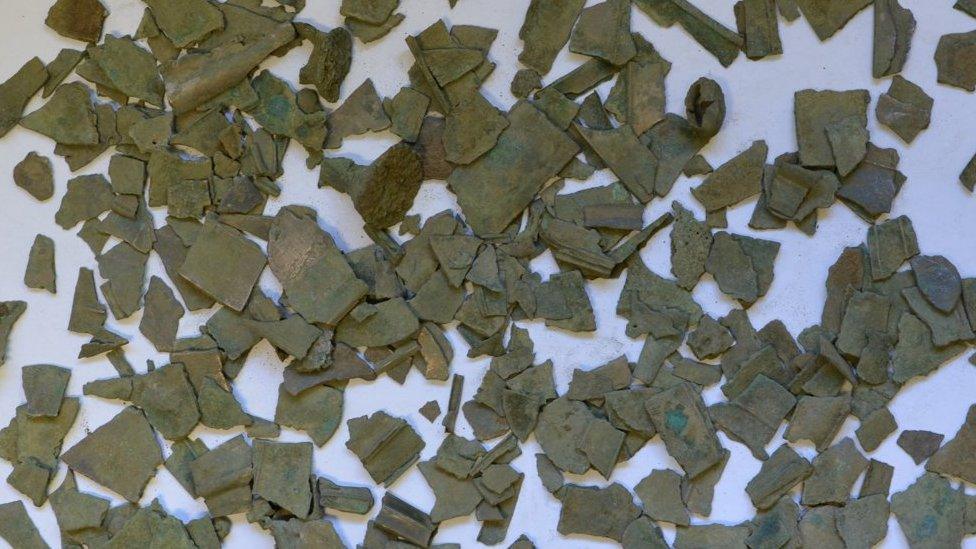Bronze Age settlement uncovered during road build

Work on Europa Way revealed archaeological finds from several periods of history
- Published
The remains of a Late Bronze Age settlement "of considerable significance" were uncovered during the development of a new road, archaeologists said.
A cremation cemetery with 18 burials, "substantial" pottery items and two roundhouses were found during excavations for Europa Way, Ipswich, which opened last month.
Suffolk County Council said it indicated a 3,000-year-old settlement with a mixed agricultural economy, including cereal production and cattle breeding.
Chris Thatcher of Oxford Archaeology, which undertook the dig, called it an important discovery for the understanding of prehistoric activity in the area.
The cemetery contained 18 burials, with radiocarbon dating confirming it dated from circa 1200 BC.
The postholes of two roundhouses, numerous four and six-post structures and two ring gullies were also found on the site near Bramford and Sproughton last year, ahead of work beginning on the £2.1m road in August.
Other interesting objects included ceramics from circa 1150-800 BC, fragmented fired clay weights, a clay spindle whorl (used during the spinning of yarn) cremation urns and a copper-alloy pin, the council said.
Worked flints - including a rare example of a flint quern, used for hand-grinding grain into flour - were among the objects that helped to indicate the type of settlement.
Cemetery location 'distinctive'
"Some aspects of the settlement remains are of considerable significance in the wider regional context, especially the substantial pottery finds, the cremation cemetery and the way that the agricultural landscape was organised," added Mr Thatcher.
"One distinctive feature of this cremation cemetery is how close it was to the buildings and daily life - the inference being that the inhabitants of the settlement were likely buried close by."
He explained this was part of an emerging pattern of Late Bronze Age burials, which appeared to mark a shift from a preference for major cemeteries.
Archaeological finds from other periods included small quantities of Neolithic residual pottery and worked flint and an Iron Age gold coin.
The council said there was already a "rich record" of prehistoric land around the River Gipping near Ipswich, and the full archive of finds would be kept and curated by the county's archaeological service.
Get in touch
Do you have a story suggestion for Suffolk?
Follow Suffolk news on BBC Sounds, Facebook, external, Instagram, external and X, external.
Related topics
- Published15 March 2023

- Published11 December 2014